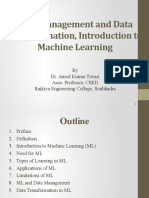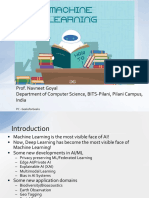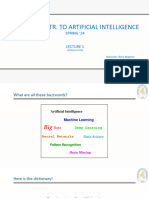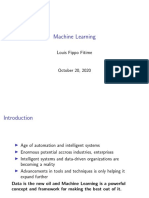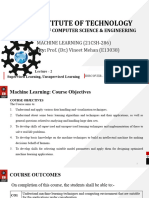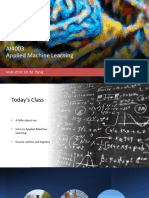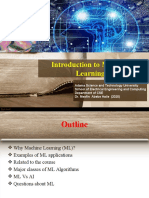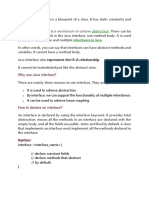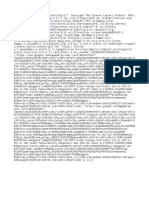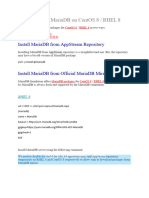0% found this document useful (0 votes)
35 views23 pagesCSE 445 - Lecture 1 - Machine Learning Introduction
CSE 445: Machine Learning is a course taught by Intisar Tahmid Naheen at North South University, covering essential concepts, resources, and project requirements. The course emphasizes various machine learning techniques, including supervised, unsupervised, and reinforcement learning, while addressing common challenges like overfitting and model evaluation. Recommended resources include textbooks and online courses, with a focus on practical applications and group projects.
Uploaded by
sarwar76200Copyright
© © All Rights Reserved
We take content rights seriously. If you suspect this is your content, claim it here.
Available Formats
Download as PDF, TXT or read online on Scribd
0% found this document useful (0 votes)
35 views23 pagesCSE 445 - Lecture 1 - Machine Learning Introduction
CSE 445: Machine Learning is a course taught by Intisar Tahmid Naheen at North South University, covering essential concepts, resources, and project requirements. The course emphasizes various machine learning techniques, including supervised, unsupervised, and reinforcement learning, while addressing common challenges like overfitting and model evaluation. Recommended resources include textbooks and online courses, with a focus on practical applications and group projects.
Uploaded by
sarwar76200Copyright
© © All Rights Reserved
We take content rights seriously. If you suspect this is your content, claim it here.
Available Formats
Download as PDF, TXT or read online on Scribd
/ 23

